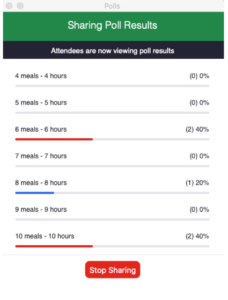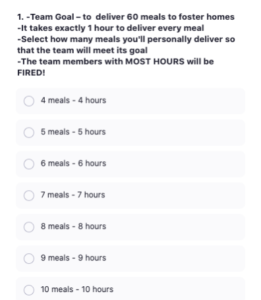During the start of the pandemic, my Reactive Tendencies kicked in full power. I was holding my first virtual leadership team workshop, replacing our signature offsite.
I’ve been coaching individuals and teams on Zoom for a long time, but I always insisted that new client kickoffs be on a full-day offsite. The Gravity Stick Exercise and walking the LCP Mat were a winning combination. Having none of them on Zoom seemed like a recipe for failure.
Doesn’t it sound like the mother of all things Reactive? Fear of failure. The anxiety that, “I wouldn’t perform well.” The “not-good-enough” voice was taking over… again.
I looked at the Leadership Circle Profile™ graph hanging on the wall and started to laugh. “Dave, you are Reactive,” I told myself. And, yes, I’m talking to myself. I wanted a Perfect first-time virtual workshop. Add to that strong Driven and Ambition to have a successful engagement. You’ve got my best Controlling mindset.
So, I crossed the line into the Collaborative Competency. In less than an hour, I reached out to fellow practitioners for advice. I got a lot of great ideas, such as breakout rooms and virtual mat, but I didn’t hear any suitable replacement for the Gravity Stick Exercise.
That was the activity that set the tone for the rest of the day. The one that shows rather than tells how the Reactive stands in the way. But what makes this exercise so powerful? And, how can leaders experience the effect of their Reactive Tendencies on team performance without the stick?
The answer is simple: By facing a similar tension between Purpose and Safety.
Purpose and Vision are the goals to lower the stick gently to the ground.
Safety and Fear are the rumors that if team members break contact with the stick, bad things happen.
Teams rarely lower the gravity stick at the first attempt. The opposite happens. The stick goes up to the surprise of the participants – the Reactive wins over the Creative. Fear beats Purpose.
Source: LCP certification slide
A similar experience requires opposing forces:
- Team goal (Purpose/Creative)
- Individual fear (Safety/Reactive)
A new idea came from the incredible Michael O’Connor at the The Leadership Circle. He suggested using the Zoom Poll as the mechanics.
Thank you, Mike! It worked despite my skepticism.
The client was a nonprofit organization. I set the team goal to deliver 60 meals to foster kids’ shelters. It would take exactly one hour to deliver each meal. The hours connect the purpose to the fear. I then announced that the organization would fire the participants with the most hours. Pretty simple. Isn’t it?
For the team to deliver 60 meals, each of the six participants should deliver 10 meals, which will take 10 hours. If they all do so, there wouldn’t be people that spend more hours than others. Nobody would lose their job. Right? It wasn’t that easy. It didn’t work that way for this team or for other teams that have tried this exercise since then.
Here is how the anonymous poll looked on Zoom.
I put everybody on mute and by the end of the 60 seconds, only half of the participants voted. So I extended by 60 seconds. After a third extension, 5 participants delivered a total of 40 meals (the goal was 60).

One participant said she had blacked out when she saw a math problem. The Poll technology overwhelmed another participant. Two participants didn’t scroll down, so they didn’t see the nine and ten options (which I later changed the options to 6-10 meals). Don’t we face such challenges in real life?
Team members reflected on the effect of their Reactive on team performance. One of them wrote in a survey, “The poll exercise was effective! It did provoke anxiety and made me extremely uncomfortable. It was an opportunity for me to see what holds us back as a team.”
I’d love to hear your comments and suggestions for improvements. Let’s collaborate to help our clients internalize The Leadership Circle framework in the new virtual era.

He is the founder of Varlinx and the former CEO of the multinational company QNET leading 1,000 employees and the former CEO of the tech startup Executive.
Originally from Israel, Dave lived for 18 years in Hong Kong, Malaysia, and Singapore. The teams he had led achieved an average 39% YoY growth in 34 countries.
Dave laid his leadership foundation on the battlefield as a fighter pilot and air force commander. He took his cockpit experience from the briefing room to the boardroom.
His mission is to evolve leadership effectiveness so that, together, we create a ripple effect of unity in the world.
He lives in the San Francisco Bay Area with his wife Ainsley. In his free time, he skis, hikes, plays electric guitar, works out, and ‘parents’ three adult children (and a cat).








Thank you Dave for sharing your story and this gravity stick replacement activity. I can feel my reactive perfect and critical kicking in and I am keen to experiment and give it a go.